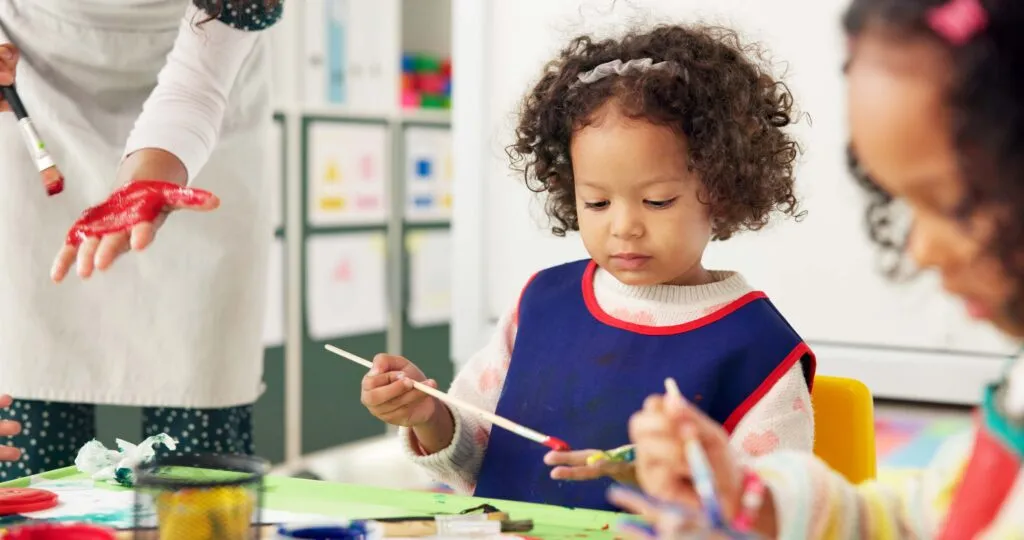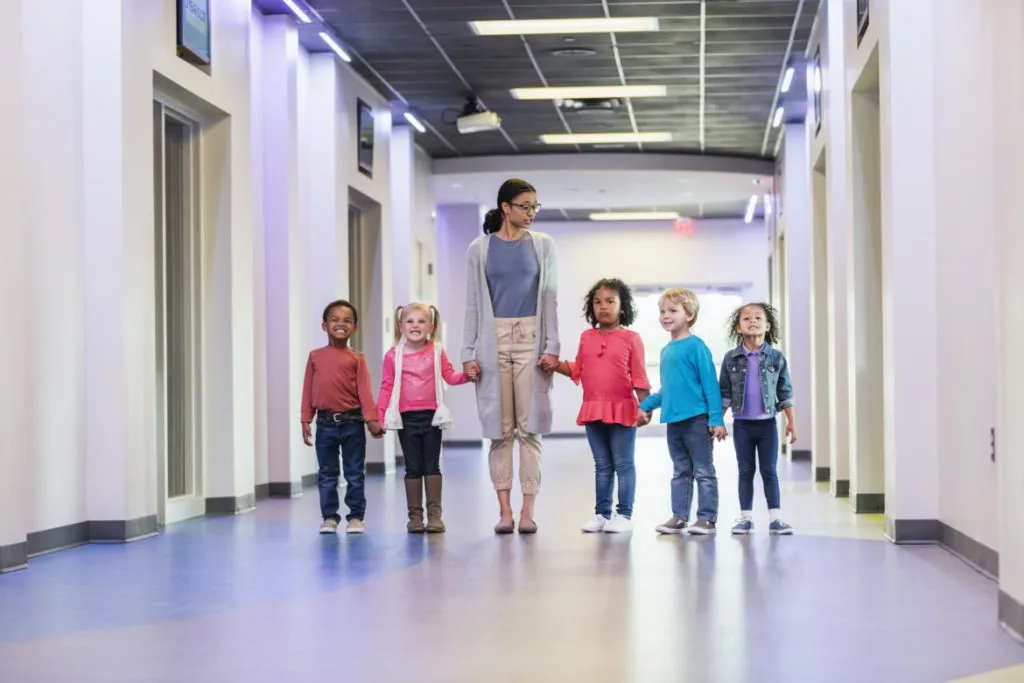What Does a Good School Culture Look Like in Early Childhood Education?


Summary of Insights
- A positive school culture is built on trust, belonging, and shared purpose.
- It benefits everyone—leaders, teachers, children, and families.
- Programs with a positive culture are better equipped to handle change and sustain success.
What Does “School Culture” Really Mean?
When people describe a great school, they often talk about how it feels. There’s a sense of joy, teamwork, and shared commitment. That feeling doesn’t happen by accident—it’s the result of a strong school culture.
School culture in early learning programs refers to the shared values, beliefs, relationships, and daily experiences that shape how everyone in a program feels—leaders, teachers, families, and children alike.
While school climate reflects the current mood or tone of a program, culture runs deeper. It’s the foundation that shapes every interaction, decision, and policy. Culture is built over time through trust, consistency, and connection, and it has a powerful impact on learning and development.
A strong culture is one where everyone feels safe, valued, and supported to grow. Our Six Positive Messages illustrate how those feelings take shape through the shared language, consistent practices, and caring relationships found throughout your program.
Why School Culture Matters
A positive culture doesn’t just make people happier, it makes early childhood programs stronger. When children, teachers, and families share a sense of belonging, they’re more engaged, resilient, and collaborative.
For teachers, a supportive culture means feeling appreciated, trusted, and empowered to do their best work. It leads to greater retention, stronger teamwork, and higher instructional quality.
For children, culture is the invisible structure that helps them feel safe enough to explore, make mistakes, and build relationships.
And for families, it’s what transforms a school into a community, a place where they feel seen, heard, and included in their children’s learning journey.
Ultimately, a strong school culture impacts everything from professional development and instructional quality to family engagement and program outcomes. It’s not a “nice-to-have”: it’s the foundation of lasting success.
The Core Elements of a Good School Culture
While every program is unique, strong, positive cultures share a few key characteristics.
- Belonging: Every teacher, child, and family feels welcome and valued.
- Trust: Consistent, predictable routines and open communication create trust and safety.
- Purpose: Everyone is working toward the same shared goal—helping children thrive.
- Consistency: Aligned expectations ensure the same experience across classrooms.
- Autonomy: Teachers and children are empowered to make choices and lead within a supportive structure.
Together, these elements create the foundation for a thriving community, one where leaders and teachers work in alignment, families feel welcomed, and children are supported to grow with confidence and joy.
Challenges Programs Face—and How a Strong Culture Solves Them
Every school or center faces challenges, but especially in early childhood education, where change is constant. New curriculum tools, updated policies, staff turnover, and evolving family needs can test even the most dedicated teams.
When culture is weak or inconsistent, these changes can feel overwhelming. Communication breaks down, morale dips, and trust erodes. But when culture is strong, it becomes the anchor that holds a community together.
- For leaders: Clear values and shared purpose make it easier to introduce new initiatives without resistance.
- For teachers: A positive culture creates stability and support during transitions. Teachers feel safe to try new approaches, ask questions, and adapt.
- For children: A sense of belonging and predictability helps them feel secure, confident, and ready to learn—no matter what changes around them.
- For families: Consistent, caring communication builds trust and helps them stay engaged, even when things shift.
Change is inevitable, but when programs are rooted in trust, belonging, and collaboration, it becomes an opportunity for growth rather than disruption. A strong school culture acts as the foundation that allows programs to adapt and evolve while keeping their sense of connection and purpose intact.
A Strong School Culture Improves Child Outcomes
When children feel safe, valued, and connected, they’re more ready to learn. In programs with strong, positive cultures, children show greater engagement, persistence, and confidence in their abilities. They are more willing to take risks, explore new ideas, and form meaningful relationships with teachers and peers. In fact, recent longitudinal research found that a stronger sense of school belonging predicted higher academic achievement over time.1 Consistent routines and caring communication create a sense of security that allows children to focus on learning and developing the social–emotional and cognitive skills that build a strong foundation for future success.
Building a Culture That Lasts
A positive program culture doesn’t come from a single event, initiative, or meeting. Instead, it’s built and reinforced every day through relationships and intentional action.
- Leaders model the tone through transparency, empathy, and consistency.
- Teachers nurture it through daily interactions, routines, and moments of reflection.
- Families reinforce it when they feel included and respected as partners in their children’s learning.
- Children carry it forward through kindness, curiosity, and connection with their peers, teachers, and school staff.
The strongest school cultures are the ones that continue to evolve while staying rooted in shared values, such as trust, belonging, and joy.
Culture isn’t built overnight, but when programs invest in it, the results last for years.

Explore how leaders and teachers are creating environments where everyone feels safe, supported, and inspired in our recent webinar
Creating a Joyful School Culture.
Frequently Asked Questions
Culture is the set of shared beliefs and values that define a program over time; climate is the current emotional “weather.” Culture shapes climate.
Through staff surveys, family feedback, classroom observations, and retention patterns. Indicators like collaboration, trust, and consistency reflect culture in action.
Start with relationships. Listen actively, communicate openly, and align on shared goals. Celebrate successes and reinforce your values daily.
Leaders set the tone through their communication, expectations, and decision-making. When they lead with transparency and empathy, teachers and families follow suit.
Yes—but it takes intentional effort. Small, consistent actions (like more staff collaboration or celebrating wins) can gradually shift the tone and build momentum.
Families are an essential part of school culture. Their participation and feedback strengthen trust and ensure consistency between home and school.
References
- Sakellariou, C. (2025). Reciprocal longitudinal effects between sense of school belonging and academic achievement: Quasi-experimental estimates using United States primary school data. Frontiers in Psychology, 15. https://doi.org/10.3389/fpsyg.2024.1478320

